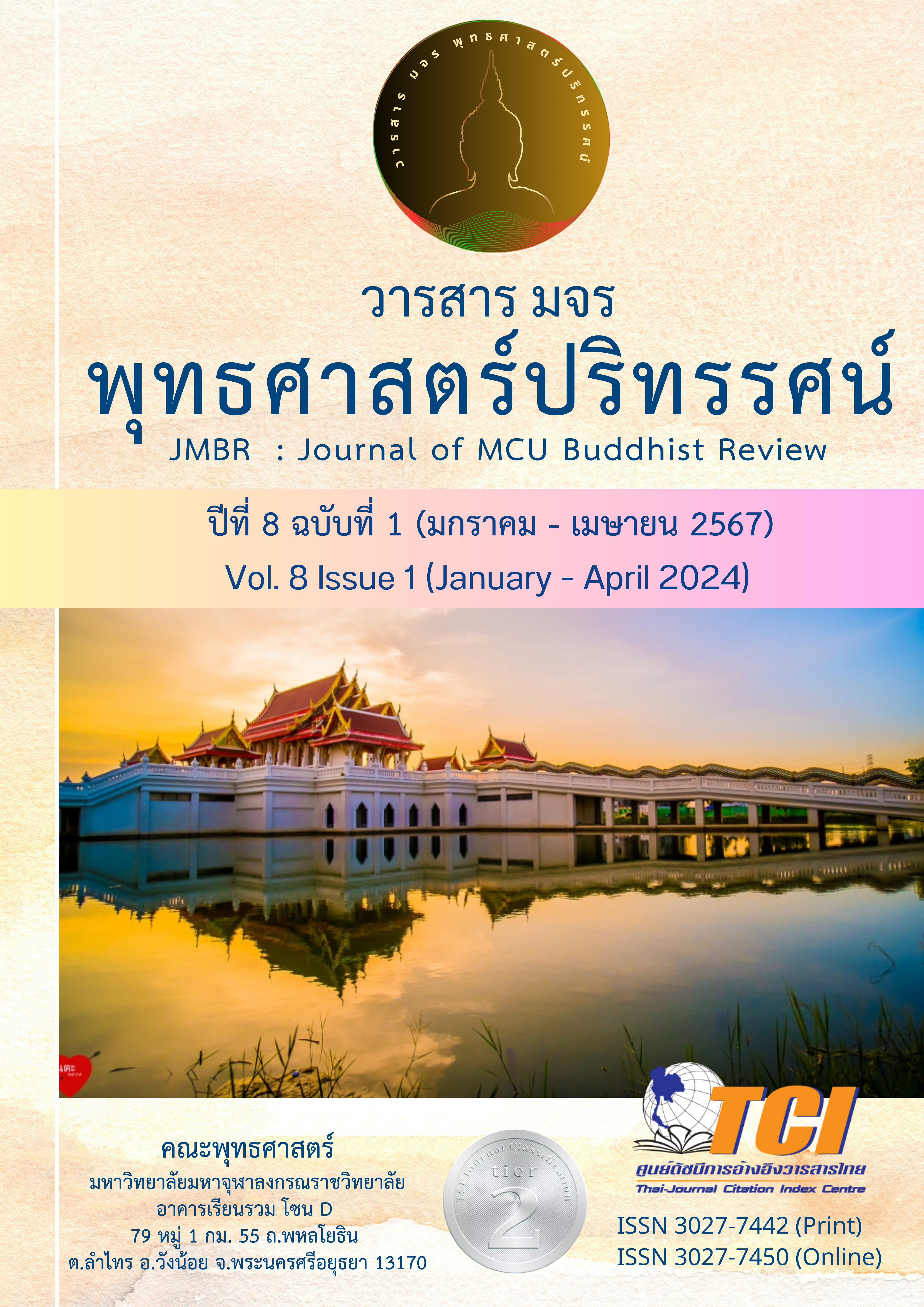Guides to the Cultural Promotion of Luoyang Drama for Cultural Ourism
Main Article Content
บทคัดย่อ
This research article is about Luoyang drama is an important part of the regional cultural tourism in Luoyang. The objectives of this study are: 1) To study the historical background of Luoyang drama; 2) To study the current situation and problems of the cultural performance of Luoyang drama. 3) To study the guide to the cultural performance and promotion of Luoyang Drama in cultural tourism. The research results show that: 1) The performances in the study are combined with the famous scenic spots in Luoyang, and the location is inside the tourist attractions, using the history during the reign of Wu Zetian as the basic script, most of the performance time is concentrated in the afternoon and evening; 2) The performance in the study uses actors and tourists to integrate tourists into the performance, and improve the senses and experience of tourists.3) Ticket price, time, performance story, form and geographical location were identified as important factors. At present, cultural integration still needs to be strengthened. As a local drama, Henan Opera forms performing arts products with representative cultural heritage that can rely on its advantages. The study describes cultural performance and cultural tourism guide, although the study is only for Luoyang drama, the results are expected to apply to historical and cultural regions.
Article Details

อนุญาตภายใต้เงื่อนไข Creative Commons Attribution-NonCommercial-NoDerivatives 4.0 International License.
- บทความที่ได้รับการตีพิมพ์เป็นลิขสิทธิ์ของวารสาร มจร พุทธศาสตร์ปริทรรศน์
- ข้อความใดๆ ที่ปรากฎในบทความที่ได้รับการตีพิมพ์ในวารสาร ถือเป็นความรับผิดชอบของผู้เขียนบทความ และข้อคิดเห็นนั้นไม่ถือว่าเป็นทัศนะและความรับผิดชอบของกองบรรณาธิการวารสาร มจร พุทธศาสตร์ปริทรรศน์
เอกสารอ้างอิง
Akkapanyo, P. & Kerdchor, C. (2023). Buddhist Tourism Promotion of the Temples in Nan Municipality, Nan Province. Journal of MCU Buddhism Review. 7(3), 125-136.
Bai, X. (2020). Exploration of the development status and optimization path of cultural Tourism and performing arts. Sichuan Drama. 10(7), 167-170.
Bi, J. (2019). Immersive tourism performance: connotation, characteristics, and development power. Journal of Xuchang College. 14(4), 112-120.
Chai Y. (2021). Research on the immersive experience design strategy of digital Night Tour From the perspective of interactive narrative. Master’s Thesis. Jiangnan University.
Hua, J. & Chen, Q. (2019). Immersive experience: a new business format that integrates. culture. and technology. Journal of Shanghai University of Finance and Economics. 9(3), 18-32.
Jin, j. (2023). Take "See Pingyao again" as an example. Journal of Nanjing Open University. 12(01), 67-73.
Ju, j. (2022). Exploration and research on the development of tourism performance under the integration of culture and tourism. Tourism and Photography. 9 (4), 88-90.
Li, S. (2022)."Immersive experience" with Luoyang cultural tourism industry. NPC Construc- tion. 13(4), 19-21.
Liang, C. (2022). Research on Tourism Performance Development in Luoyang city from the perspective of immersive experience. Master's Thesis. Xinyang Normal University.
Lin, l. (2016). Analysis of the development status and problems of Luoyang tourism performing arts market. ZhiFu Times. 8(1), 54 - 56.
Ma, Y. (2015). Analysis of Luoyang tourism performing arts market development strategy. Modern Economic Information. 7(2), 482 - 484.
Meng, J. (2023). Research on the application of immersive experience in tourism performance. Take only Henan Drama City of Fantasy as an example. Travel Overview. 5(3), 135-138.
View to the south. (2022). Analysis of immersive tourism performing arts under the back- ground of cultural and tourism fusion. Daguan (Forum). 12(2), 116-118.
Wu, X. (2019). Practice path and cultural communication of urban performing arts industry. brand -Take northwest Hunan city cultural tourism performing arts as an example. Mass literature and art. 17(3), 256-257.
Zhong, S. & Dai, Q. (2021). The evolution trend of tourism performance immersive experience under the background of cultural and tourism integration. Research on cultural soft power. 6(5), 64-74.


